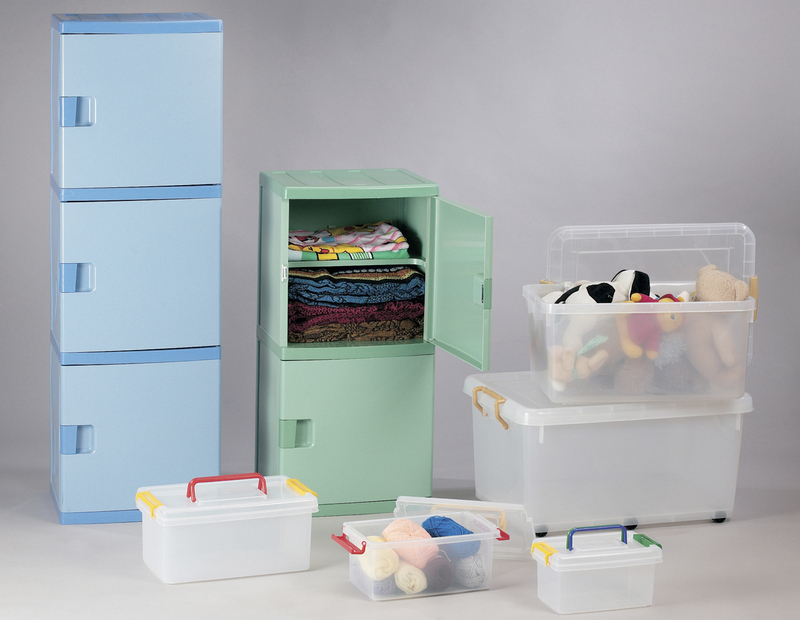Proven Tips to Store Your Sofa the Right Way
Posted on 08/06/2025
Proven Tips to Store Your Sofa the Right Way
Storing furniture--particularly your cherished sofa--is about much more than simply moving it out of sight. Whether you're remodeling, relocating, or protecting your pieces for a season, knowing how to store your sofa the right way preserves its comfort, cleanliness, and value for years to come. This comprehensive guide uncovers the proven ways to keep your sofa in prime condition, ensuring you avoid common storage mistakes and safeguard your investment.
Why Proper Sofa Storage Matters
Sofas are central pieces in our homes, and improper storage can lead to costly damage like fabric deterioration, warped frames, or pest infestations. By using the right techniques to store your couch, you'll ensure it emerges from storage looking just as good as when it went in.
- Extends sofa lifespan by protecting upholstery and frames
- Saves money on cleaning or repair expenses
- Prepares sofa for immediate use after retrieval
- Maintains sentimental or heirloom value

Preparing Your Sofa for Storage
Proper preparation is the cornerstone of effective sofa storage. *Investing a little extra effort now keeps your piece pristine for the long haul*.
1. Deep Clean Your Sofa
Before storing, give your couch or sofa a thorough cleaning. This eliminates dirt, debris, and food particles, making it less attractive to pests and mold.
- Fabric sofas: Vacuum every surface, crevice, and cushion. Use upholstery cleaner for stubborn stains and allow everything to dry completely.
- Leather sofas: Wipe with a leather cleaning solution and soft cloth. Never store a wet leather sofa--moisture leads to mold and warping.
- Remove and launder slipcovers if applicable.
2. Disassemble Whenever Possible
If your sofa's components can be safely removed (legs, arms, cushions), do so. This makes transportation and storage easier and decreases the risk of breakage or deformation.
- Place all small parts, hardware, and screws in labeled, sealed bags
- Store parts with or near your sofa
- Snap photos before disassembly for easy reassembly later
3. Protect With the Right Covers
*Avoid plastic wrap directly on your sofa*, which can trap moisture and cause mildew or fabric yellowing. Instead, opt for:
- Breathable covers like cotton sheets or furniture blankets
- Padded wrapping for delicate arms and legs
- Dust covers to shield from grit and sunlight
Choosing the Optimal Storage Location
Where and how you store your sofa dramatically affects its condition. Understanding your options ensures you make the best decision for preservation and accessibility.
1. Climate-Controlled Storage Units
Whenever possible, select a climate-controlled self storage facility. Fluctuations in temperature and humidity are the top culprits for framework warping, leather cracking, and mildew growth.
- Maintain a steady temperature year-round (usually 55-80?F)
- Control humidity to prevent mold, mildew, and pests
- Ideal for antique or high-value sofas
2. Clean, Dry, and Elevated Spaces
If professional storage isn't available, choose an indoor, dry, and well-ventilated room in your home. *Never store furniture directly on the ground, especially in basements or garages where water damage is a risk.*
- Use pallets, moving blankets, or boards to elevate sofa legs
- Ensure there's good airflow
- Avoid stacking heavy items on or around the sofa
3. Avoid Uncovered Outdoor Storage
Leaving your sofa in a backyard, open shed, or carport exposes it to weather, UV rays, dust, and critters. This leads to irreversible damage--always opt for sheltered, secure options.
How to Position Your Sofa for Storage Success
Placement is key! It's tempting to maximize space, but incorrect positioning is a leading cause of sofa damage.
- Never store sofas on their ends. This can twist frames and foam over time.
- Keep sofas upright in their natural sitting position.
- Avoid placing boxes or heavy items on top--this causes indentations and fabric tears.
- Leave a gap between your sofa and storage unit walls for air circulation.
Extra Steps for Long-Term Sofa Storage
For storage beyond a few weeks, smart safeguarding steps will keep your furniture looking its best--no matter how long it's out of use.
1. Use Moisture and Pest Control Products
Add desiccant packets, silica gel, or charcoal bags near or under your stored sofa to absorb moisture. Alternately, use pest deterrents like cedar blocks (safe for fabrics!) or natural repellents to prevent infestations.
2. Schedule Routine Checks
If possible, visit your storage space every few months:
- Inspect for signs of moisture or pests
- Reposition coverings and check for dust buildup
- Air out the area by briefly removing covers
3. Refresh Upholstery Before Use
When you're ready to retrieve your couch from storage:
- Vacuum all surfaces again
- Launder slipcovers or cushions if necessary
- Use fabric fresheners or air out thoroughly
- Reassemble using photos taken during disassembly
Common Mistakes to Avoid When Storing Your Sofa
*Don't let simple errors ruin your furniture investment.* Here are the top mistakes you should steer clear of:
- Using airtight plastic wraps or bags - Traps in moisture, promoting mold and mildew.
- Storing a dirty sofa - Food crumbs and debris attract pests.
- Placing heavy objects atop the sofa - Causes sagging and tears.
- Storing directly on damp floors - Risks water damage, stains, and pests.
- Forgetting climate control - Heat and humidity cause long-term deterioration.
Expert Tips for Different Sofa Types
Every couch is unique. Here's how to adapt your sofa storage strategy for different materials:
Fabric Sofas
- Choose breathable cotton or linen covers for protection
- Ensure complete dryness pre-storage to prevent mildew
- Use vacuum bags for pillows, but not for the frame
Leather Sofas
- Apply leather conditioner before storage
- Keep out of direct sunlight to prevent fading and cracking
- Opt for soft, padded covers rather than sheets alone
Sectionals & Modular Sofas
- Disassemble into individual units when feasible
- Label each section and corresponding hardware
- Stack or align in their normal sitting orientation
Antique or Heirloom Sofas
- Consult a professional about specialty wrapping
- Use archival covers or acid-free paper for added protection
- Avoid garages or attics with uncontrolled climates at all costs
Hiring Professional Movers or Storage Solutions
Sometimes, the best choice is to partner with experts:
- Professional movers have the right equipment to handle large, delicate sofas
- Some storage facilities offer specialized furniture storage options
- Insurance coverage protects your belongings during transit and storage
Get quotes from a few local companies and ask about their furniture handling policies for peace of mind.
Checklist: The Ultimate Sofa Storage Guide
To sum it all up, here's a handy step-by-step checklist for storing your sofa the right way:
- Thoroughly clean and dry your sofa
- Disassemble parts if possible and store hardware safely
- Wrap with breathable, padded covers (avoid plastic directly on sofa)
- Choose a dry, climate-controlled space or prepare an indoor room
- Elevate sofa off the floor and ensure upright positioning
- Use moisture and pest control aids
- Perform periodic check-ins to spot any issues early
- Refresh and clean upholstery before use

Frequently Asked Questions About Sofa Storage
How long can I safely store my sofa?
With proper preparation (especially moisture and pest protection), sofas can be stored for several years without issues--provided the environment remains climate-controlled and dry.
Is it okay to stack items on my couch in storage?
Never stack heavy items on your stored sofa or couch. This leads to fabric warping, tears, and permanent indentations.
What's the best way to keep my sofa fresh in storage?
Use deodorizing sachets, routinely check the environment, and make sure your couch is completely dry before covering.
Can I safely store my couch in a garage or attic?
It's not recommended. Garages and attics often expose your sofa to drastic changes in humidity and temperature, heightening risks of mold, pests, and frame damage.
Conclusion: Store Your Sofa the Right Way for Long-Term Enjoyment
By following these proven strategies and storage tips for your sofa, you'll protect not only its appearance but also its comfort and function for years to come. No matter the reason you need to store your couch, a little thoughtful preparation today prevents regret tomorrow. Make the most of these insights to store your sofa the right way--ensuring it remains a treasured centerpiece in your home for many seasons ahead.





